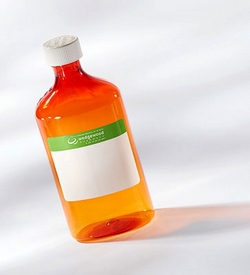Free Delivery on $50+* || Clinic Website
Providing Quality & Trust
Chlorambucil Oral Oil Suspension
Wedgewood Pharmacy
Starting at $141.00
$141.00 Each
Detailed Description
CHLORAMBUCIL: ORAL OIL SUSPENSION

Chlorambucil Oral Oil Suspension
Prescribed For: Horses, Dogs and Cats
May be Prescribed For: Infection-Bacterial and Cancer
Chlorambucil may be prescribed for
- Infection-Bacterial
- Cancer
One of the dosage forms available for Chlorambucil is Oral Oil Suspension. Wedgewood Pharmacy’s oral suspensions and solutions are a familiar and convenient dosage form. Oral suspensions and solutions can be administered directly into the mouth using a dosing syringe or mixed with a small amount of food. They offer a wide range of flavoring options, and flexible dosing adjustments.
88 strength combinations of Chlorambucil Oral Oil Suspension are available.
- Chlorambucil from 0.2 mg/ml to 25 mg/ml
- Chloramphenicol 500 mg/ml
Basic Information
Chlorambucil is an immunosuppressant that is commonly prescribed by veterinarians to treat dogs and cats that are suffering from immune-mediated disorders and cancers, such as lymphoma and leukemia. The drug also has antineoplastic properties that make it effective for ridding the pet's body of unhealthy cellular growths in the blood and lymphatic systems.
Chlorambucil is an alkylating, cytotoxic, antineoplastic drug that forms covalent bonds with nucleic acids, causing disruption of DNA strands and suppressing antibody production. It usually is used in conjunction with other drugs, most often Prednisolone. Chlorambucil is well-absorbed orally and is metabolized by the liver.
Veterinary Medicine Uses for Chlorambucil
Chlorambucil is used in dogs to treat canine lymphoma, chronic lymphocytic leukemia, lymphoreticular neoplasms, macroglobinemia, polycythemia vera, and inflammatory bowel disease. It also can be used in combination with Prednisone when treating Pemphigus complex.
Chlorambucil is used in cats to treat lymphocytic leukemia, lymphocytic plasmacytic enteritis, Pemphigus, inflammatory bowel disease, and feline eosinophillic granuloma complex. Chlorambucil is considered more appropriate than Azathioprine for use in cats.
Chlorambucil has been used within a multiple-drug protocol to treat lymphoma in horses.
Potential Side-Effects of Chlorambucil
Side effects primarily are gastrointestinal distress (including vomiting and diarrhea) and bone-marrow suppression. Alopecia, particularly in Poodles and Kerry Blues, has been reported. Seizures are a rarer side-effect.
Chlorambucil can produce several different side-effects. The most common of these side effects include vomiting, diarrhea, loss of appetite, loss of hair (with delayed re-growth), tremors, seizures, and liver and kidney enzyme imbalances. Other, more serious side-effects also are possible, including bone-marrow suppression, anemia, gastro-intestinal tract damage, kidney disease, lung disease, kidney damage, liver damage, and irreversible infertility in males.
Drug Interactions with Chlorambucil
Other antineoplastics, a bone-marrow suppressant, a corticosteroid, an immunosuppressive, a protein-bound medication, or Amphotericin-B medications can cause reactions with Chlorambucil.
Precautions for Using Chlorambucil
Take precautions when handling this medication. When administering the medication you should wear gloves.
Chlorambucil should be administered with extreme care in cases where the patient has an existing infection or bone-marrow depression. This medication should not be administered to pregnant or lactating females due to increased risk for birth defects, or to males that are intended for breeding.
Veterinary care is needed immediately if the pet exhibits symptoms such as swelling of the face, worsening skin rash, hives, vomiting, or difficulty breathing, which can indicate an allergic reaction to the drug. Bruising or bleeding while taking Chlorambucil also require immediate professional action.
Chlorambucil can be teratogenic. Because of the serious nature of the diseases for which it is used, its potential benefit to the patient should be weighed against the possible fetal harm.
Dosage and Administration of Chlorambucil
The dosage and method of administration for Chlorambucil can only be determined by the animal's treating veterinarian. It is very important to keep the medication out of reach of children. Additionally, pet owners should avoid contact with your pet's urine, feces, saliva, or vomit for 48 hours after each dose.
The successful outcome of an animal's treatment depends on the owner's commitment and ability to administer this medication properly. It is very important to not miss doses. Should a pet owner inadvertently miss a dose, it is important to give the pet a dose immediately upon remembering, unless it is within a few hours of the next scheduled dose.
If this is the case, restart the dose at the next scheduled administration time. Do not double up on this medication, as amounts greater than the prescribed dosage can be toxic to your pet.
The usual dosage for Chlorambucil is once every day or every other day when suppressing the immune system. In cases where the drug is prescribed to treat cancer, the dosage is usually administered every day, or every day for a period of two to three weeks.
Overdose can cause seizures and pancytopenia. Gastric emptying should be considered depending on the patient's neurologic status. Blood-component therapy can be warranted based on the degree of pancytopenia.
Chlorambucil is commercially manufactured under the trade name Leukeran®.

Powered by nopCommerce
This site is running in live payment mode. Real payments will be processed.

